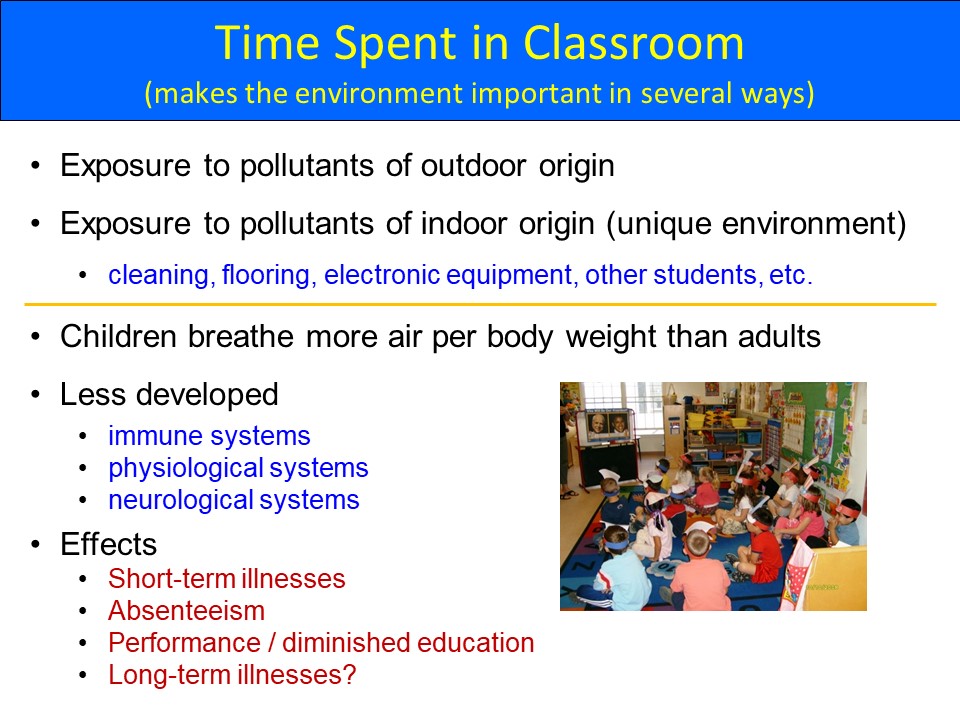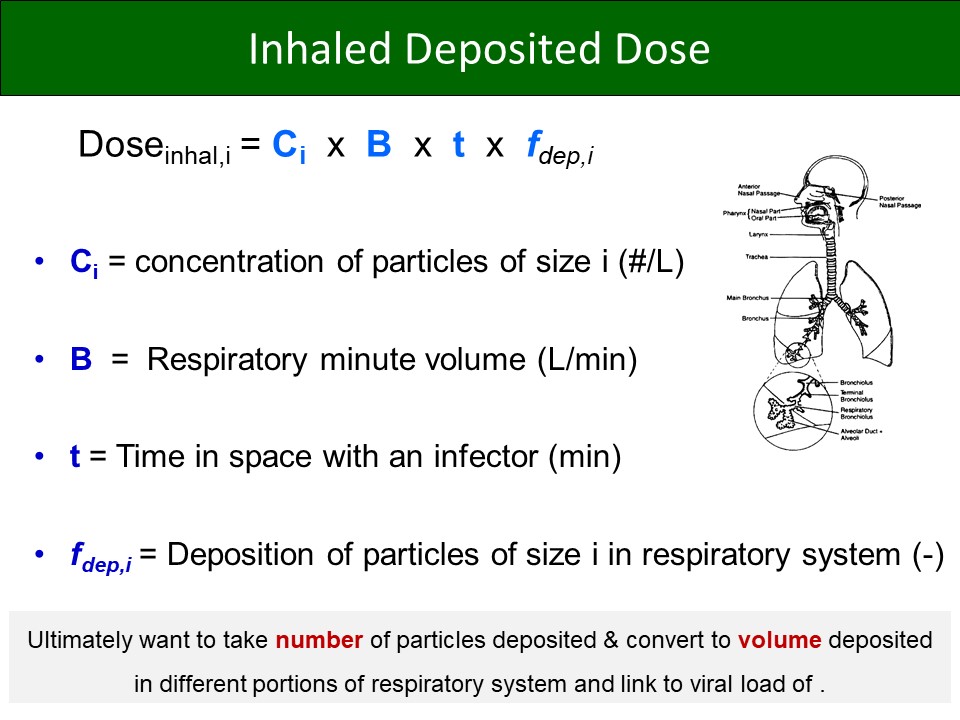
1/ Some thoughts spurred by the guidance below
6 eACH (ventilation + filtration) is somewhat arbitrary, but a reasonable guidepost. Keywords here are "at least." The allusion to 95% removal of contaminant in 30 min is a bit deceiving. It ONLY relates to after source is removed.
6 eACH (ventilation + filtration) is somewhat arbitrary, but a reasonable guidepost. Keywords here are "at least." The allusion to 95% removal of contaminant in 30 min is a bit deceiving. It ONLY relates to after source is removed.

2/ For a well-mixed indoor air space, an increase in eACH from, say, 2/hr (unfortunately not untypical for K-12 classrooms) to 6/hr yields a maximum decrease in indoor aerosol concentration of 67% and not 95%. Starting at 3/hr = max of 50% reduction w/ increase to 6 eACH.
3/ And the net benefit is particle size dependent, as particle deposition to surfaces is a third sink (removal mechanism) that adds to removal by ventilation and filtration.
4/ For particles in the size range of 0.5 to 10 microns, the particle decay rate by deposition can vary from approximately 0.1/hr (for 0.5 micron particles) to 10/hr for 10 micron particles.
5/ For a specific particle size there is some variation in decay rates depending on a number of factors, including the extent of mixing (kinetic energy) of air, surface to volume ratio, and nature of indoor materials.
6/ For example, a reasonable range of decay rates for a 3 micron particle in indoor spaces is 0.3 to 1/hr. These particle decay rates must be accounted for to determine actual reductions in aerosol concentrations due to increasing eACH (ventilation + filtration).
7/ Further, increasing eACH by increased ventilation or a portable HEPA air cleaner increases mixing conditions in air w/ some increases in particle decay to surfaces, which should also be accounted for in estimates. This is an area still in need of some research.
8/ Let's take a situation of a 1 micron particle with a decay rate of 0.2/hr and a 10 micron particle with a decay rate to surfaces of 6/hr & assume that eACH refers to ventilation + filtration. I will adjust for the additional removal by deposition to surfaces at steady-state.
9/ For the 1 micron particle an increase from 2 eACH to 6 eACH is really an increase from 2.2/hr to 6.2/hr. That yields about a 65% reduction in 1 micron particle concentrations in the air, close to the original calculation of 67%.
10/ A reduction of 65% is nothing to turn away from. It is good, but is not 95% and I would not count on it as a sole source of protection. Good masks + the increased eACH would together give a tremendous reduction in inhalation dose and, therefore, risk of infection.
11/ Now let's look at that 10 micron particle. In this case the 4 eACH increase from 2 to 6/hr is more like 8 to 12/hr when a particle decay rate of 6/hr is superimposed. This yields a 33% reduction in 10 micron particle concentration in the air.
12/ Concluding point. Increasing the equivalent ACH by increasing ventilation and filtration is important and we SHOULD do so to the extent possible. Focus on the words "at least" and do not think that somehow 6 eACH is magical. It is a good guidepost to try to exceed.
13/ Reducing aerosol concentrations by increasing ventilation and filtration is very important during this pandemic.
14/ However, unless one is starting at an extremely low eACH & increasing to a value exceeding 6 eACH, having everyone wearing high quality masks, e.g., N95, will yield a greater reduction in inhalation dose for all ranges of aerosol particle sizes.
15/ The solution should be what I and many others have tried to scream from rooftops since early in 2020 - layered inhalation dose (and therefore risk) reduction is the key.
16/ Use multiple proven and effective interventions to reduce inhalation dose (mask, ventilate, filter, avoid non-essential spaces w/ large crowds). Add vaccinate fully (including booster), and protection will be extremely significant.
17/ If you do these things + test and quarantine as needed, you will also protect others. We too often forget that to end this pandemic we have to also work on reducing the inhalation dose of everyone around us as well.
17/ NONE of this is rocket science, folks. It's a little bit of math and a lot of common sense. Get vaccinated and lower your inhalation dose. That's the pathway into a safer 2022 for yourself, family, friends, colleagues, & anyone else you encounter in daily life. Just do it!
• • •
Missing some Tweet in this thread? You can try to
force a refresh







